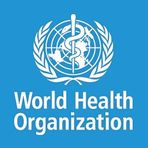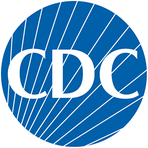The Bird Flu Alarm: A Wake-Up Call for America
January 9, 2025, 10:12 pm

Location: Switzerland, Geneva, Chambésy
Employees: 5001-10000
Founded date: 1948

Location: United States, Rhode Island, Providence
Employees: 1001-5000
Founded date: 1764
Total raised: $1.25M

Location: United States, Georgia, Atlanta
Employees: 10001+
Founded date: 1946
The recent death of a Louisiana resident from bird flu has sent shockwaves across the United States. This tragic event marks the first human fatality linked to the H5N1 virus in the country. It’s a stark reminder that nature can strike hard and fast. The bird flu, a virus that has lurked in the shadows for decades, is now at the forefront of public health discussions.
The World Health Organization (WHO) has documented over 950 confirmed human cases of bird flu globally since 2003, with a staggering 460 fatalities. This data paints a grim picture. Experts warn that the virus is a serious threat. It has historically been deadly, and the recent case in Louisiana underscores this reality. The patient, an individual over 60 with underlying health conditions, contracted the virus after exposure to infected birds.
The Centers for Disease Control and Prevention (CDC) has classified this incident as tragic but not entirely unexpected. They emphasize that there are no alarming changes in the virus spreading among wildlife or livestock that would heighten the risk to human health. However, the virus's increasing presence in the environment raises concerns. The H5N1 strain has been spreading among wild birds, poultry, and even dairy cows. This growing intersection of animal and human health creates a perfect storm for potential outbreaks.
Health officials are on high alert. They urge anyone who comes into contact with sick or dead birds to take precautions. Wearing protective gear is essential. The virus can be transmitted through direct contact, and as the Louisiana case shows, the risks are real.
Despite the WHO's assessment that the general risk to the public remains low, experts are sounding the alarm. The mutation of the H5N1 virus in mammals poses a new threat. The virus has shown signs of adapting, which could make it more transmissible among humans. This potential for mutation is a ticking time bomb.
Calls for increased surveillance and proactive measures are growing louder. Health experts are urging the U.S. government to step up its game. The recent death has intensified these calls, especially with the political landscape shifting. The return of Donald Trump to the White House raises questions about the future of public health policies.
In the past year, 66 human cases of bird flu have been reported in the U.S., primarily among farm workers. Most cases were mild until the Louisiana incident. Nearly half of the 954 human cases of H5N1 recorded since 2003 have ended in death. This statistic is chilling.
The government has announced a $306 million funding boost for bird flu surveillance and research. This is a step in the right direction, but experts argue it’s not enough. They emphasize the need for transparency in reporting infections among animals. The Department of Agriculture must release more data to help track the virus's spread.
Moreover, the U.S. has a stockpile of millions of H5N1 vaccine doses. These vaccines should be authorized and made available to at-risk populations, such as farm workers. Rapid home testing, similar to COVID-19 tests, is another crucial tool that needs to be developed. Monitoring wastewater for traces of the virus could also provide valuable insights into its spread.
The urgency of the situation cannot be overstated. Experts warn that the current administration must act swiftly before the political landscape changes. The potential appointment of Robert F. Kennedy Jr. as health secretary raises concerns. His skepticism towards vaccines could hinder efforts to combat a potential pandemic.
The bird flu is not just a distant threat; it’s knocking at our door. The recent death in Louisiana is a wake-up call. It highlights the interconnectedness of animal and human health. The virus does not recognize borders or political affiliations.
As we move forward, vigilance is key. The lessons learned from past pandemics must guide our actions. Surveillance, transparency, and preparedness are essential. The world is watching, and the stakes are high.
In conclusion, the bird flu's presence in the U.S. is a clarion call for action. The recent death serves as a reminder that we cannot afford to be complacent. The time to act is now. The health of our communities depends on it. The bird flu may be a silent predator, but it is one we must confront head-on. The future of public health hangs in the balance.
The World Health Organization (WHO) has documented over 950 confirmed human cases of bird flu globally since 2003, with a staggering 460 fatalities. This data paints a grim picture. Experts warn that the virus is a serious threat. It has historically been deadly, and the recent case in Louisiana underscores this reality. The patient, an individual over 60 with underlying health conditions, contracted the virus after exposure to infected birds.
The Centers for Disease Control and Prevention (CDC) has classified this incident as tragic but not entirely unexpected. They emphasize that there are no alarming changes in the virus spreading among wildlife or livestock that would heighten the risk to human health. However, the virus's increasing presence in the environment raises concerns. The H5N1 strain has been spreading among wild birds, poultry, and even dairy cows. This growing intersection of animal and human health creates a perfect storm for potential outbreaks.
Health officials are on high alert. They urge anyone who comes into contact with sick or dead birds to take precautions. Wearing protective gear is essential. The virus can be transmitted through direct contact, and as the Louisiana case shows, the risks are real.
Despite the WHO's assessment that the general risk to the public remains low, experts are sounding the alarm. The mutation of the H5N1 virus in mammals poses a new threat. The virus has shown signs of adapting, which could make it more transmissible among humans. This potential for mutation is a ticking time bomb.
Calls for increased surveillance and proactive measures are growing louder. Health experts are urging the U.S. government to step up its game. The recent death has intensified these calls, especially with the political landscape shifting. The return of Donald Trump to the White House raises questions about the future of public health policies.
In the past year, 66 human cases of bird flu have been reported in the U.S., primarily among farm workers. Most cases were mild until the Louisiana incident. Nearly half of the 954 human cases of H5N1 recorded since 2003 have ended in death. This statistic is chilling.
The government has announced a $306 million funding boost for bird flu surveillance and research. This is a step in the right direction, but experts argue it’s not enough. They emphasize the need for transparency in reporting infections among animals. The Department of Agriculture must release more data to help track the virus's spread.
Moreover, the U.S. has a stockpile of millions of H5N1 vaccine doses. These vaccines should be authorized and made available to at-risk populations, such as farm workers. Rapid home testing, similar to COVID-19 tests, is another crucial tool that needs to be developed. Monitoring wastewater for traces of the virus could also provide valuable insights into its spread.
The urgency of the situation cannot be overstated. Experts warn that the current administration must act swiftly before the political landscape changes. The potential appointment of Robert F. Kennedy Jr. as health secretary raises concerns. His skepticism towards vaccines could hinder efforts to combat a potential pandemic.
The bird flu is not just a distant threat; it’s knocking at our door. The recent death in Louisiana is a wake-up call. It highlights the interconnectedness of animal and human health. The virus does not recognize borders or political affiliations.
As we move forward, vigilance is key. The lessons learned from past pandemics must guide our actions. Surveillance, transparency, and preparedness are essential. The world is watching, and the stakes are high.
In conclusion, the bird flu's presence in the U.S. is a clarion call for action. The recent death serves as a reminder that we cannot afford to be complacent. The time to act is now. The health of our communities depends on it. The bird flu may be a silent predator, but it is one we must confront head-on. The future of public health hangs in the balance.